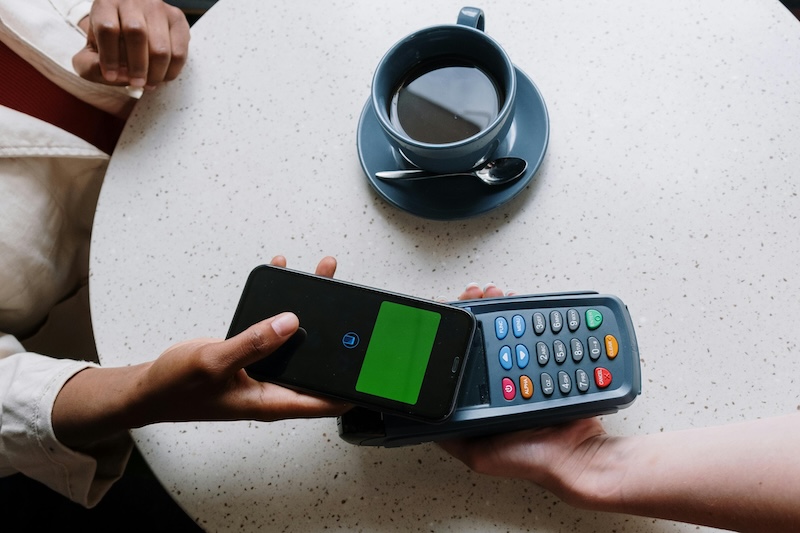Mobile payments have undoubtedly transformed how we handle our finances, offering a seamless and efficient experience.
Yet, as we revel in the ease of this digital era, a critical question looms: How secure are our mobile payments in this ever-connected world?
In this blog post, let’s explore seven best practices that act as the guardians of your digital wealth, ensuring that the world of mobile payments remains a realm of convenience without compromise.

1. Choose Reputable Payment Apps
When securing your mobile payments, the journey begins with choosing reputable payment apps. They often invest heavily in cutting-edge security measures, employing encryption technologies and stringent authentication protocols to safeguard your financial data.
Selecting a payment app with a proven track record protects your sensitive information and provides peace of mind. The user base of such applications is a testament to their reliability, as millions trust them daily to execute secure transactions.
2. Update Your Mobile Payment Apps Regularly
App developers continually release updates to address vulnerabilities and enhance security features, acting as a proactive shield against emerging threats. These software updates frequently come with fixes for potential vulnerabilities that malicious actors might exploit to access your confidential data.
Update your payment apps regularly to avoid leaving a door ajar for potential security breaches. As technology advances, so do the tactics implemented by cybercriminals. By keeping your apps up to date, you ensure your mobile payment platform is equipped with the latest defenses, creating a more robust barrier against potential cyber threats.
3. Enable Two-Factor Authentication (2FA)
Implementing 2FA goes beyond simply relying on a password; it involves incorporating an extra layer of information to validate your identity. This added step substantially increases the difficulty for unauthorized individuals attempting to gain access.
The beauty of 2FA lies in its versatility. Whether a temporary code is sent to your mobile device, a fingerprint scan, or a facial recognition prompt, the secondary authentication step acts as a formidable barrier against potential breaches. This additional security measure is particularly crucial for mobile payments, where the convenience of transactions should not compromise the safety of your financial data.
4. Use Secure Wi-Fi Networks
While public Wi-Fi might be tempting for its convenience, it can expose your financial data to potential threats. Cybercriminals often exploit vulnerabilities in public networks to intercept sensitive information during transactions.
Opt for secure and private Wi-Fi networks to fortify your mobile payments. Environments like your home network or well-established establishments offer a safer space for transactions, minimizing the chances of unauthorized entry and data breaches.
Use a virtual private network (VPN) as an extra security layer when public Wi-Fi is inevitable. A VPN encrypts your internet connection, adding an extra layer of security to your mobile transactions.
5. Regularly Check Your Account Activity
By frequently reviewing your transaction history, you create a habit of financial vigilance that can save you from unauthorized access or fraudulent activities.
Whether it’s a small, unnoticed transaction or a suspicious pattern that raises red flags, early detection is the key to mitigating risks and guaranteeing the security of your hard-earned funds. In the digital age, where transactions happen in the blink of an eye, a few moments spent reviewing your account can be the shield that safeguards your financial well-being.
Additionally, for those navigating the intricate world of finances, especially when considering an online home loan, maintaining this habit becomes even more paramount in protecting your financial interests.
6. Set Strong Passwords
Your password is the first defense against unauthorized access to your financial information, making it crucial to create one that is resilient to potential breaches. Avoid using easily guessable information such as your name, birthdate, or common words. For increased complexity, seamlessly blend uppercase and lowercase letters, numbers, and special characters.
A strong password safeguards your mobile payment accounts and is a barrier against cybercriminals attempting to exploit weak links in your digital security. Regularly updating and strengthening your passwords is a proactive measure to ensure that your financial data remains impenetrable and your mobile payment experience stays secure.
7. Educate Yourself on Phishing Scams
Phishing attempts involve deceitful tactics by cybercriminals who aim to deceive individuals into revealing confidential information (e.g., usernames, passwords, and credit card details). These scams often use legitimate emails, messages, or calls from seemingly trustworthy sources.
Educating yourself on their common characteristics is crucial to fortify your defenses against phishing scams. Be wary of unsolicited communications that request personal information, especially if they convey a sense of urgency or create a fear of consequences for non-compliance.
Legitimate entities seldom ask for sensitive details through email or messages. Verify requests through official channels, and remember that an informed user is the first line of defense against these digital hooks seeking to compromise your financial security.
In the fast-paced world of mobile payments, safeguarding your financial information is paramount. By following these seven best practices, you can create a robust defense against potential risks and confidently enjoy the convenience of mobile transactions.



